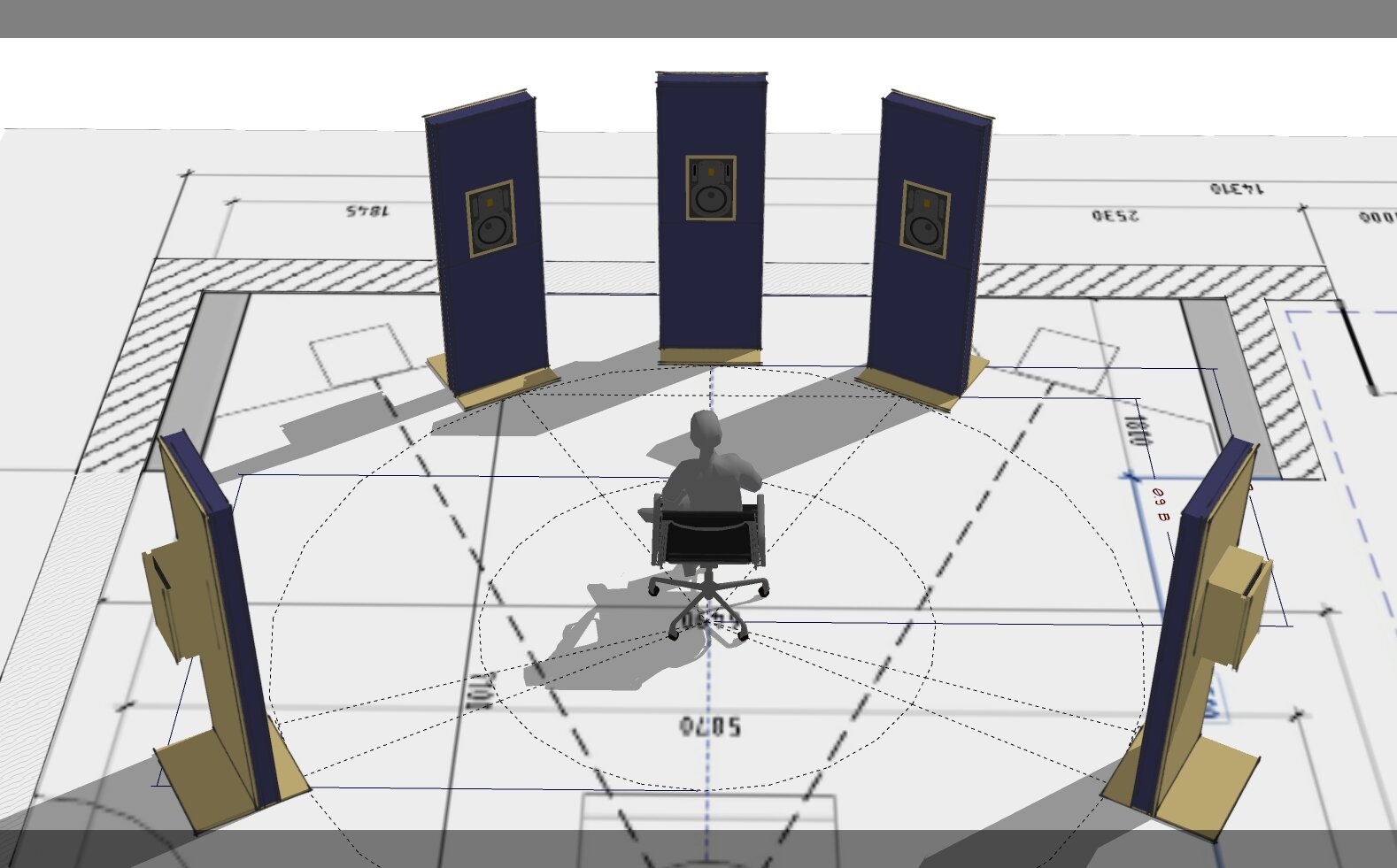-
Posts
2,297 -
Joined
-
Last visited
Everything posted by Glenn Stanton
-

Is there a central location for plugin presets?
Glenn Stanton replied to Keni's topic in Cakewalk by BandLab
i usually try to save a preset to see if the plugin has a preferred folder to store it. sometimes its a CW presets folder (there are a few) and then some have their own folders. and generally i just store them there but make a note so i can back it up (if its not already - for example, a number of plugins use the public account documents folder, others use my documents documents folder - if the latter its always backed up to onedrive, if the former, like other folders, i add a freefilesync job to gather it into a backup folder on onedrive). -

Why is Cakewalk favoring core 1 so much?
Glenn Stanton replied to RexRed's topic in Cakewalk by BandLab
i use Process Lasso as i can assign CPU affinity, power, etc -- it's much more granular and covers many more options than the Park Control (which is what i started with). so, with CW - i generally don't do much. with my CAD and rendering, the CPU and related power controls make a big difference in how fast i can move around in 3D and render images (even with a nice set of GPU, the CPU still matters because vector programs are generally single process so reconstruction of the vectors as you move (and if you have colors/ texture and shadows etc enabled) it can grind to a halt quickly. CW on the other hand, i set it to use a higher level of processing and it's happy. ? -
could you build one (platform) yourself? that could get you what you need at a good price without a huge effort (maybe a day or two factoring in the finish drying time...) they give the dimensions on a drawing: long (long) ago i built a desk for my equipment out of 3 sheets of 3/8" plywood. including the 2 isolated rack units underneath. the rack rails were the most expensive part ?
-

Why does everything have to be so complicated?
Glenn Stanton replied to Friv's topic in Instruments & Effects
i dunno. my 4-track cassette Fostex was fast - plop in a cassette, plug in my mic and guitar, tweak the input volume and hit record... 3-4 minutes max ? then each week some cleaning on the head and capstan and all was good ? -

Why does everything have to be so complicated?
Glenn Stanton replied to Friv's topic in Instruments & Effects
@Friv just like the game of Go, you can get started fairly quickly - in your preferences pick your audio IO and your MIDI keyboard. add a virtual instrument (piano, etc), press the arm track to record, press record. play your keyboard. hit stop when you're done. hit play to listen. or if you're doing a live instrument, add an audio track, arm the track for record, hit record, play your instrument, press stop to end it. press play to play it. within, i'd say a few minutes, you'll be live. within a few months you'll have acquired a decent level of expertise to record and mix. within a few years, you'll be really good but still a novice. after about 125 years you'll have mastered all the features... ? -
just an addendum - technically you can compile C# all the way down to machine level -- however -- because compilers have limitations, you can end up with a potential for unsafe execution in terms of memory and IO allocations etc. whereas explicitly managing the memory and IO (those being more complex and thusly prone to developer mistakes) can reduce the chance that bad things like memory overruns and locked files etc crash things. you tend to be more safe than taking managed code down to machine level. and when nanoseconds matter...
-
you could install Melodyne Essentials. or get the next up version depending on your budget (Celemony | Editions https://www.celemony.com/en/melodyne/melodyne-5-editions). meanwhile if you search online, there are a number of freeware autopitch products and commercial ones as well - Waves, Melda, etc all make autopitch, and harmonizer, etc plugins. free ones: https://www.sageaudio.com/blog/audio-plugins/top-5-free-vocal-tuning-and-formant-plugins.php
-

no sound after regional fx render in melodyne
Glenn Stanton replied to charles kasler's topic in Cakewalk by BandLab
try just soloing the track you're working on. skip exclusive solo as depending on where it's applied can lead to some strange routing resulting no sound ? also - have a process for yourself. when i use a region fx, i follow these steps fairly rigorously, first make a copy of the track, then for melodyne = one - create region fx, two - solo the track and do my edits, three - render fx or if i'm not happy, revert. and using small segments like what you're doing is good. one trick i picked up - using the piano or rhythm along with whatever i'm tweaking. with the studio version, the other track acts like the "chord track" for the other ones. -

CWb update screwed up my Roland VS700c drivers
Glenn Stanton replied to Mark Withers's question in Q&A
maybe there is some new info? this threads last entry from 9 months? 10 months ago... @jon sasor [cakewalk] is the VS-700 info up to date? -
well you could create a while loop which reads in the file content into an array until the app or device crashes... of course, it's more likely that reading the file means getting a file handle which could (without proper care) try to lock the file and in a folder requiring admin permission to lock it, doesn't get the exception properly caught, or worse eaten, and then nulls etc fun for all and so on. that it works on the developer desktop is meaningless. if i had a dollar every time i heard that i wouldn't have to work for a living making sure developers don't do things like that...
-
hmmm i ran into this issue and remember to install the registration number as admin, so i ran it as admin and it worked fine (two weeks ago). however one other caveat - make sure there is no extra space at the end, and in my case i found the number wrapped in the web UI and was missing the last 4 numbers. easy to fix. and in some apps (not dimension) if i copied the text from an email and there was a space at the end, and not paying attention, some products saw that as an extra character.
-
you need to run it as admin first time you register it
-
when i see it, i re-run my redistributables installer ?
-

Why is Cakewalk favoring core 1 so much?
Glenn Stanton replied to RexRed's topic in Cakewalk by BandLab
one thought is check and see what processes are running - like Defender etc which can be a problem anyways, so exclude cakewalk etc from the live scanner. -

Why is Cakewalk favoring core 1 so much?
Glenn Stanton replied to RexRed's topic in Cakewalk by BandLab
Process Lasso ? -
the reason someone includes the date in the file name is to avoid issues where downloading the file changes the file date stamp to whenever you copied/downloaded etc. and some files, if you open in an app with auto save can modify the date modified (DoRD ? ) so if the date of: mix complete, mix approval, master, master approved is important to preserve across people and systems, insert YYYMMDD (and even HHMM) is light enough to add. "My Song MIX 20230102 APPRV 20230201 blah blah etc" or better - share metadata in a related text file ? )
-
Delivery Recommendations 070711 https://naras.a.bigcontent.io/v1/static/delivery_recommendations_for_recorded_music_projects_final_09_27_18_0 some ideas on naming conventions (a bit dated perhaps) PT Guidelines v22b1.doc (grammy.com) http://www2.grammy.com/PDFs/Recording_Academy/Producers_And_Engineers/PTGuidelines.pdf Grammy Naming Conventions – Meyer Audio Tech, LLC https://meyeraudiotech.com/index.php/grammy-naming-conventions/ The Recording Academy is the leading society of music professionals | RecordingAcademy.com https://www.recordingacademy.com/producers-engineers-wing/technical-guidelines
-
yeah, some projects i want to put the version into the name - lately using "Two" "Three" etc appended after the song name. when producing and the client wants version by day (or even hours a few days few times) i use "YYYYMMDD" (or add "-HHMM" for time) so "V20230313" so it's sortable more easily. so, it may be something like "Song Name Two V20230217-1800.cwp" "Song Name Two V20230217-2030.cwp" etc
-

Has it always been this way? Or am I just now noticing?
Glenn Stanton replied to OutrageProductions's topic in Feedback Loop
did you turn on the key signature / scale setting in the MIDI track? then you can either turn off (or toggle) the key signature / scale or switch the scale to allow "off notes"- 3 replies
-
- piano roll
- event list
-
(and 2 more)
Tagged with:
-
one of the problems with the redistributables - there are variations in the top-level version in some of them depending on a patch level and any API choices the developer made... so, yes mostly 3rd parties but MS lately has been doing a lot of updates on Edge and Defender, and some OS stuff (both W10 and W11 - which i'm on now) and so i find spending the extra 10 minutes to re-run them just ensure that the ones i need are there... i'm much less concerned about some VR in Edge support for occulus products than i am my CW and Sketchup program... ?
-
yeah, the first thing i do after a new update in CW or any major OS related bits - re-run the redistributables ? i've found this means i'm skipping all the troubleshooting to solve weird agonizing mysterious issues, but i just don't have time for it ?
-

Sonitus Presets *** SOLVED ***
Glenn Stanton replied to Bristol_Jonesey's topic in Cakewalk by BandLab
-

Where are Workspaces files saved?
Glenn Stanton replied to Andres Medina's topic in Cakewalk by BandLab
yeah, it would seem nice if we could have everything in the Program Data\Cakewalk folder - no permission issues, all in one place, easy to backup. -
so the top level folder would be: My Song Project then under that i may have: My Song Project - RECORD My Song Project - VOCALS My Song Project - MIX so if i'm doing the recording phase (or i'm importing client files) - i use my recording template. get the "performance" materials done. then export those tracks. i also export a raw 2-track (perhaps with fewer instruments etc) to use as a backing track to record vocals (or solos etc). i export the vocals etc tracks. then i open my mix template and import the recorded tracks. finally i export a MIX 2-track for the mastering stage (which now that Ozone 10 doesn't have its own EXE, i'll likely setup a CW template for mastering with the O10 plugins etc). for me this keeps things fairly neat - but - if i need to do something quick and dirty, i'll just open a blank template and do all the bits there - but anything i'm really going to product goes through the template process.




